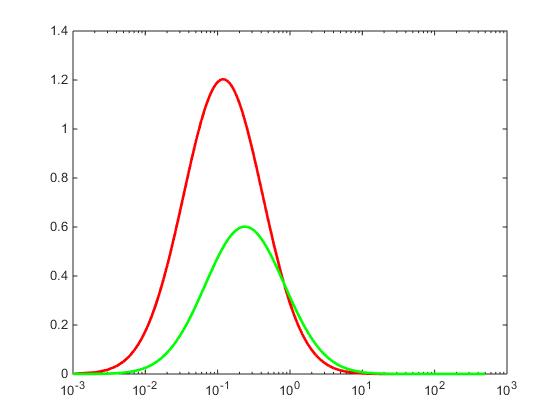I am trying to determine a metric that quantifies the distance between two continuous lognormal distributions. The data is actually a mixture of two lognormal distributions (I am not sure if this can be called bimodal). The individual distributions have different means but the same standard deviations. I have 20 data sets that can be divided into 4 groups, with each group having a constant standard deviation, but the 5 data sets in each group are made up of two distributions with different means. Some examples:
I am in search of a metric that accounts for the contrast (difference in means) and the standard deviation. I have tried out some parameters like coefficient of variation (of the mixture), Ashman's D etc. I have also tried percentage of overlap. However the problem always is that, at the end when plotted against the results I end up with 4 trend-lines again, corresponding to the 4 different standard deviations. Is there some other way I can quantify this?
Just to make myself clear, I want to quantify the difference between two distributions in a single case (between the red and green PDFs in the above image).


